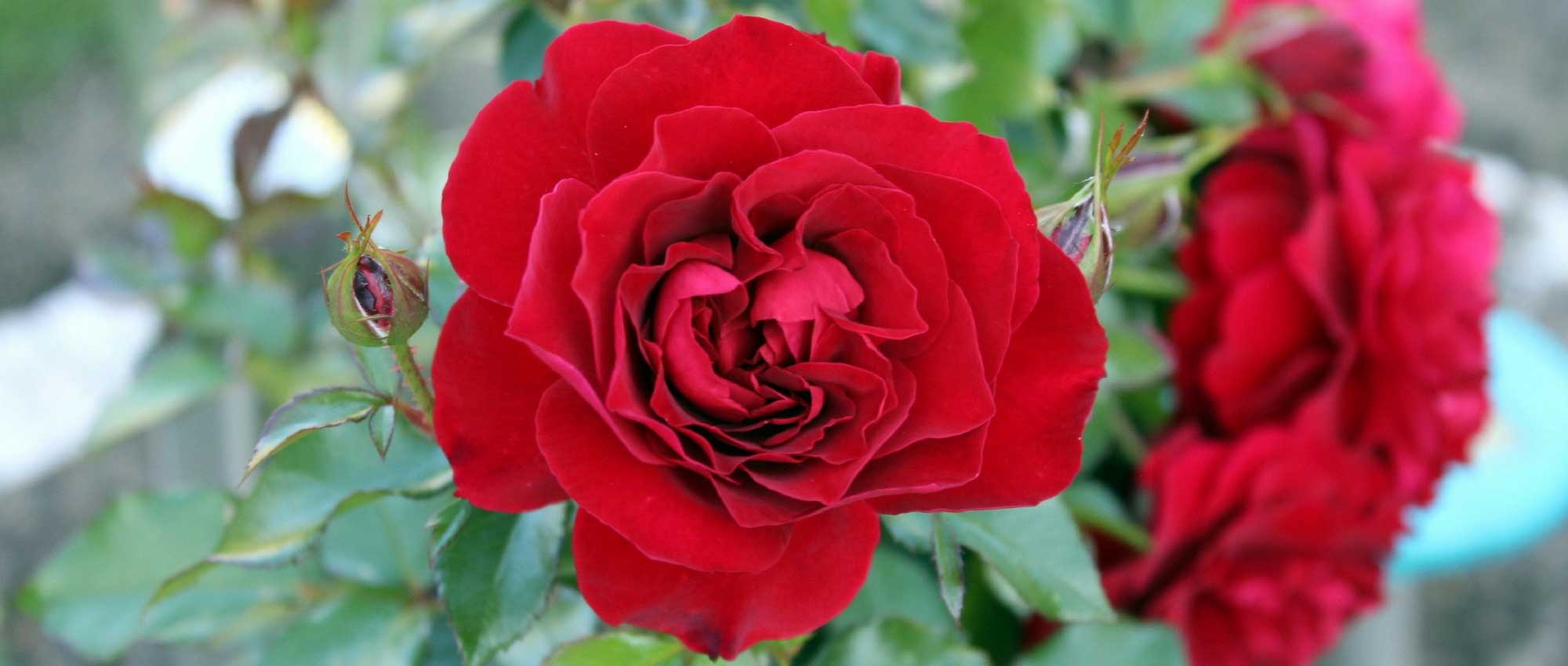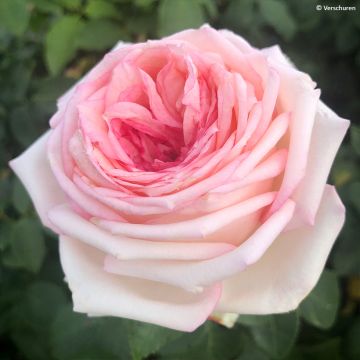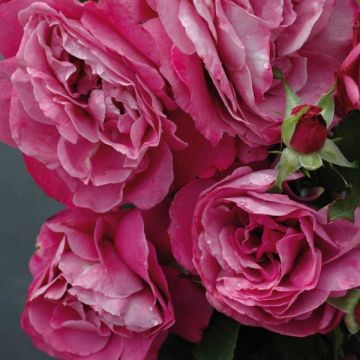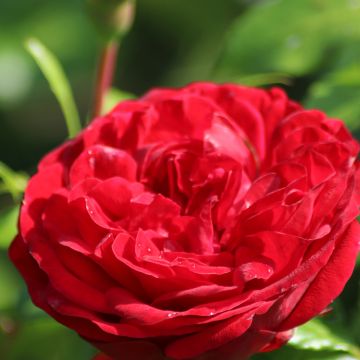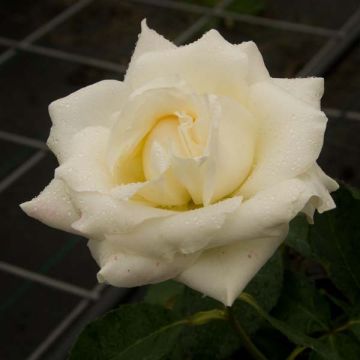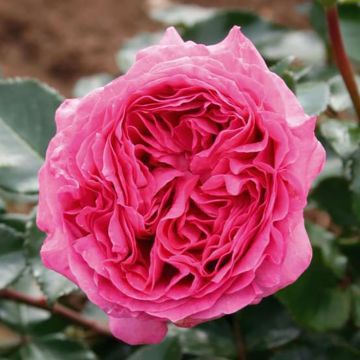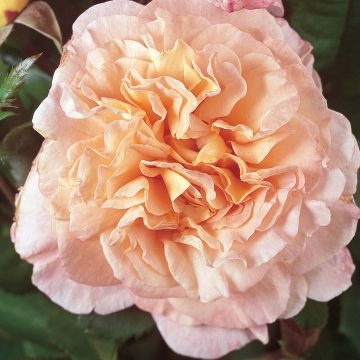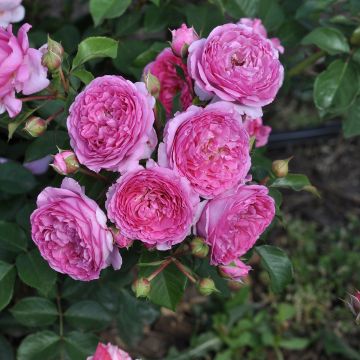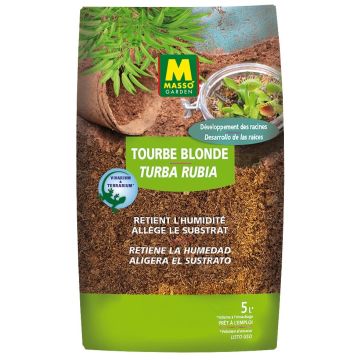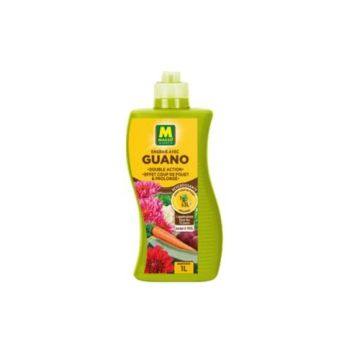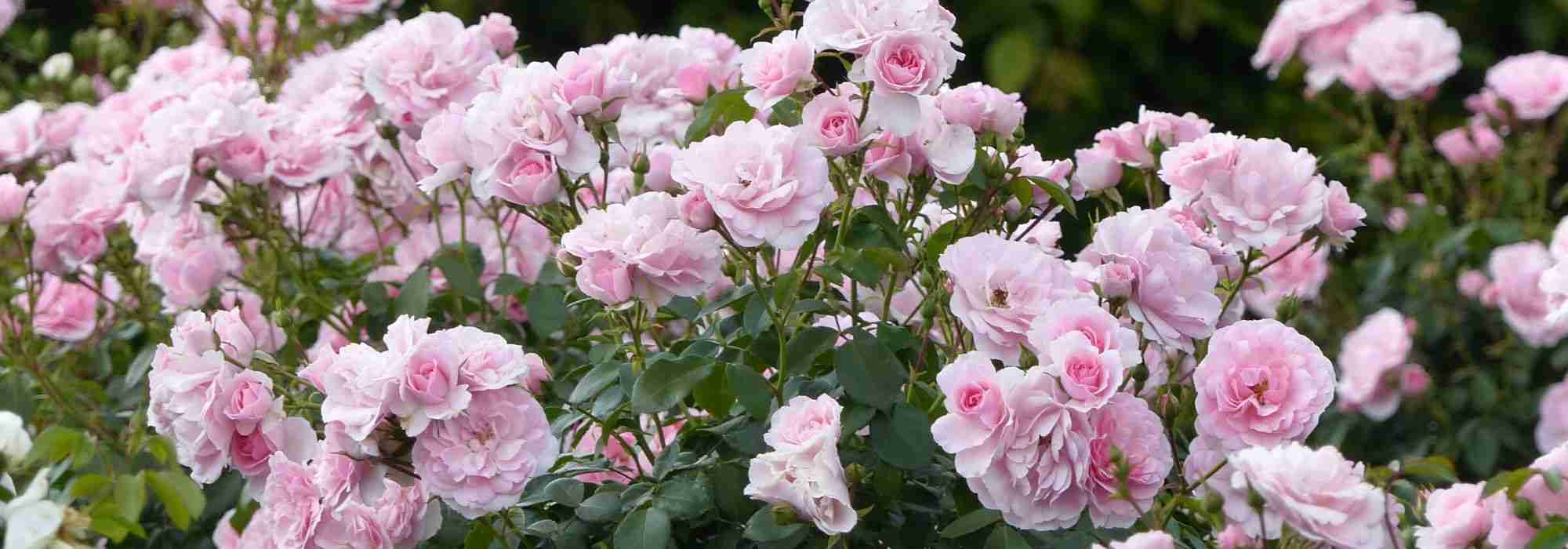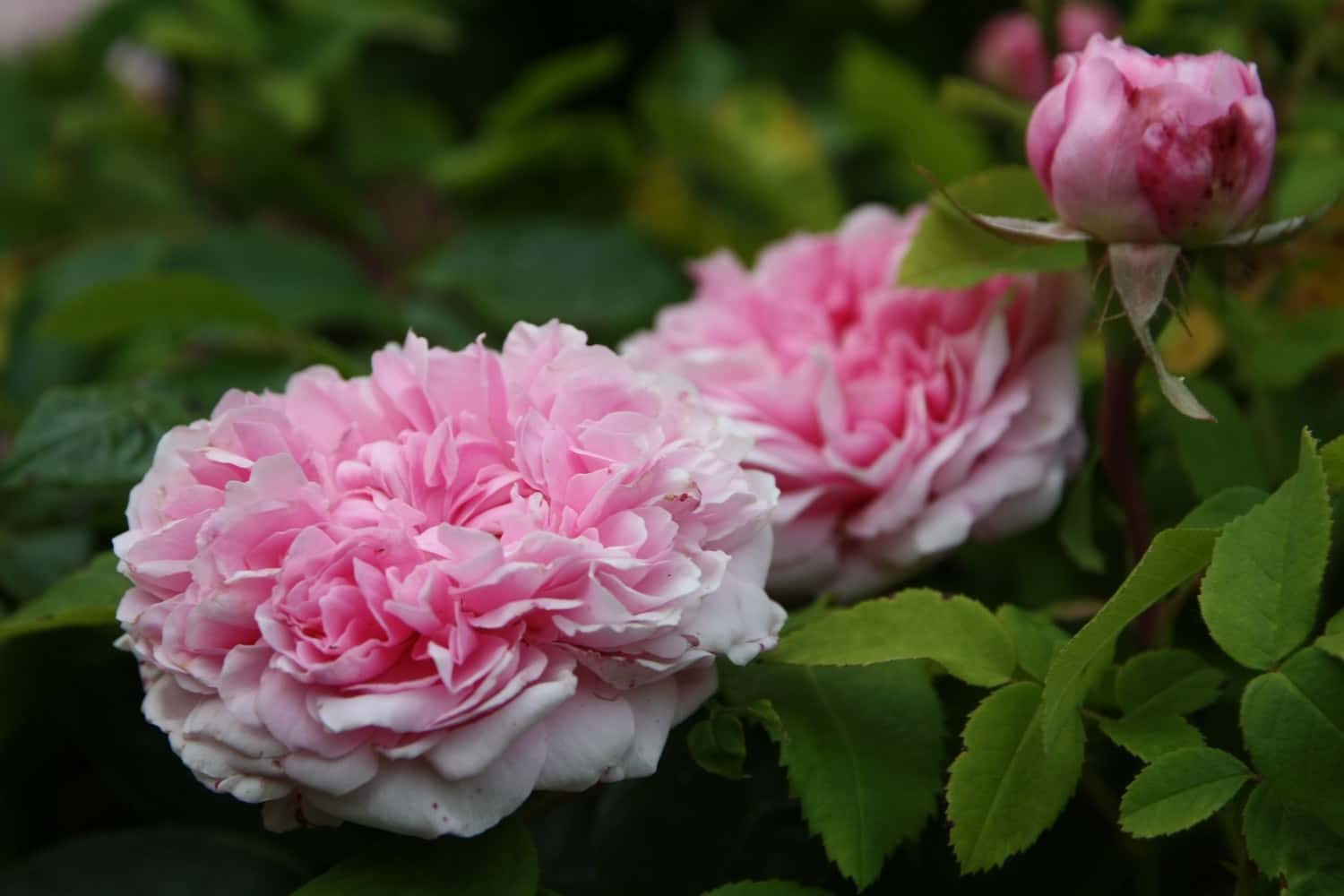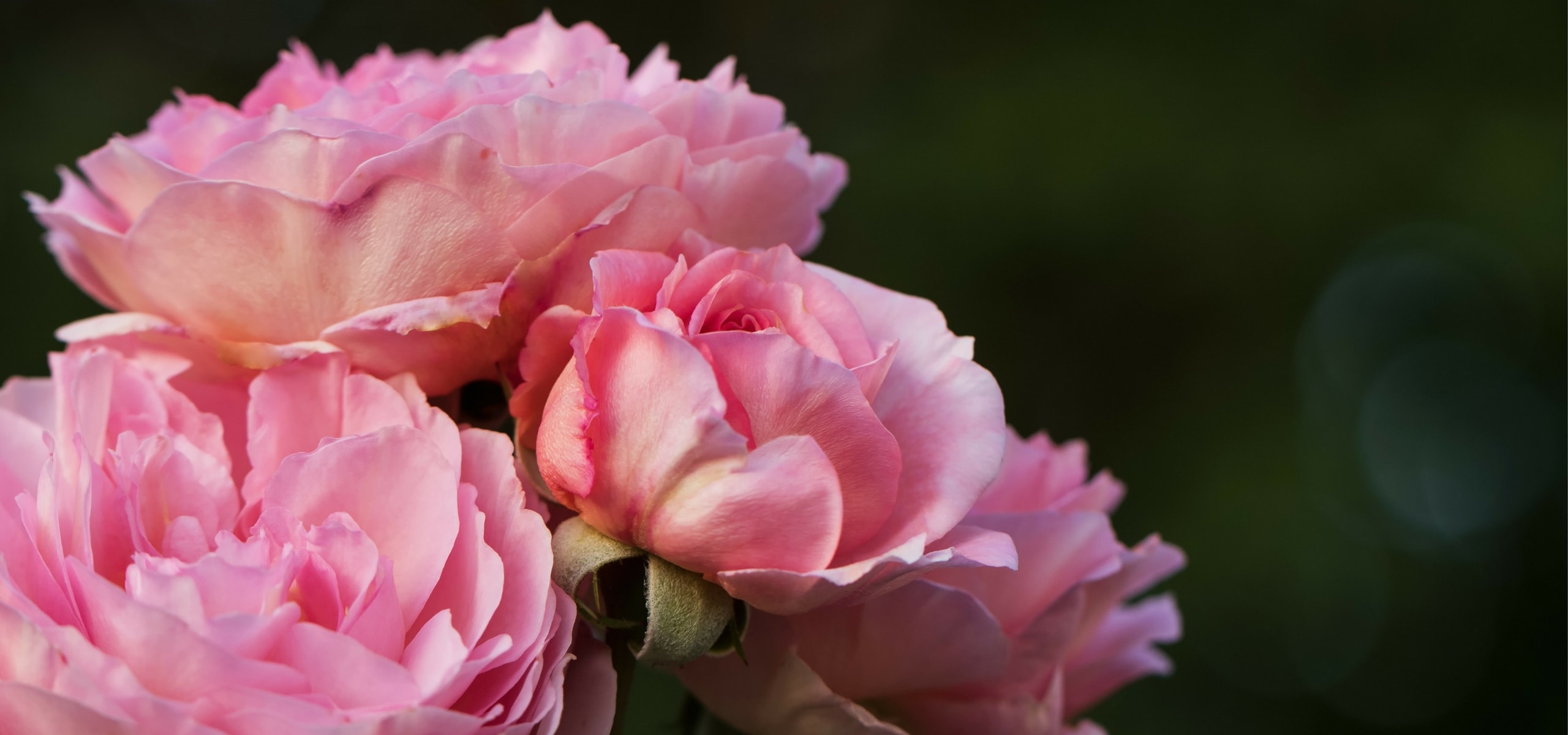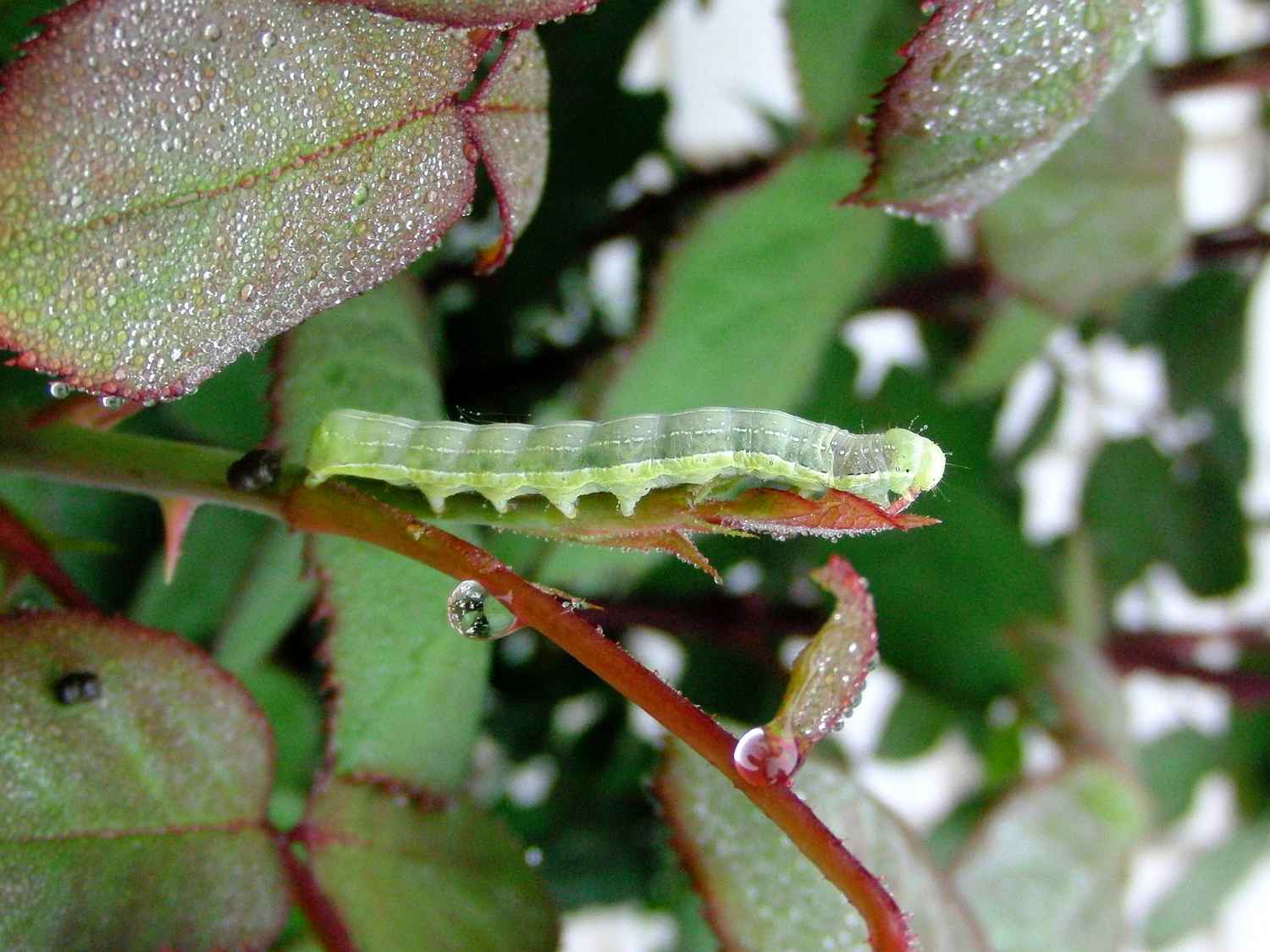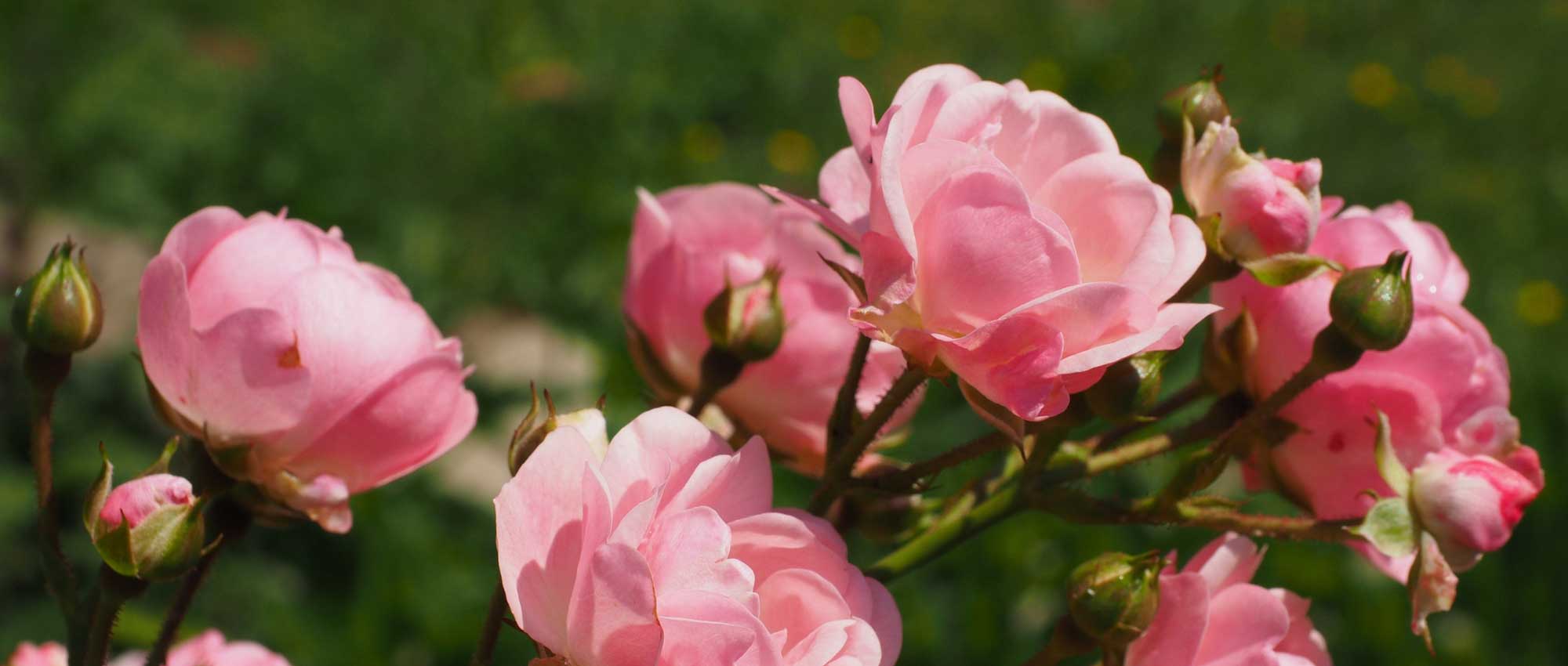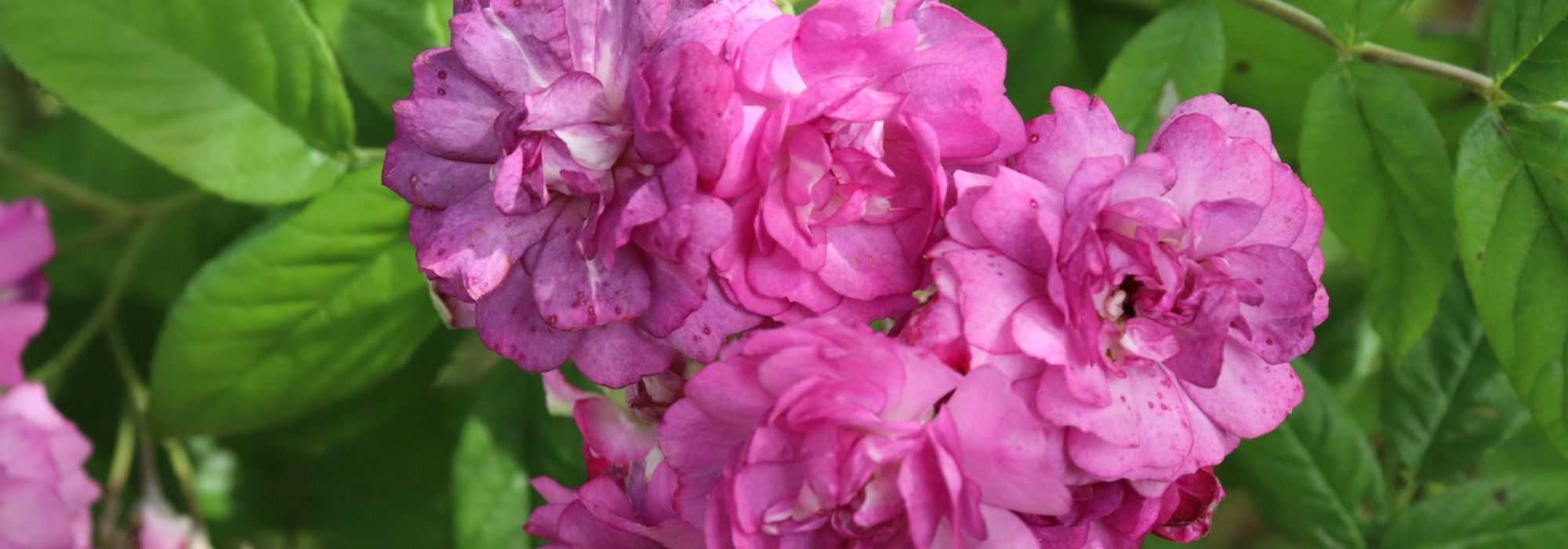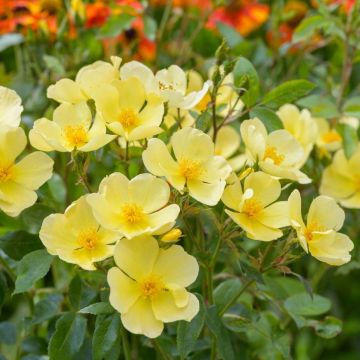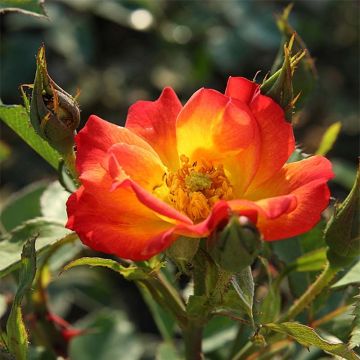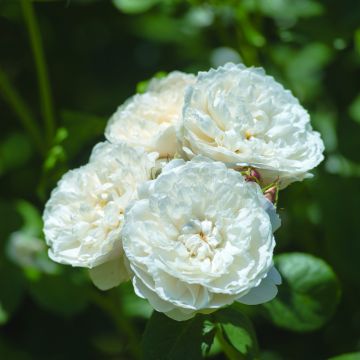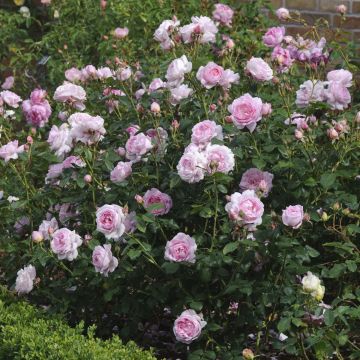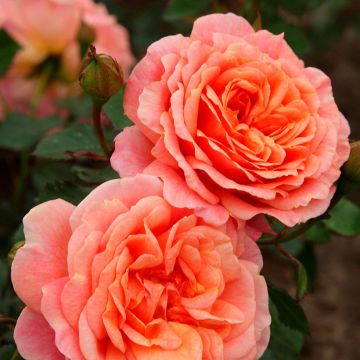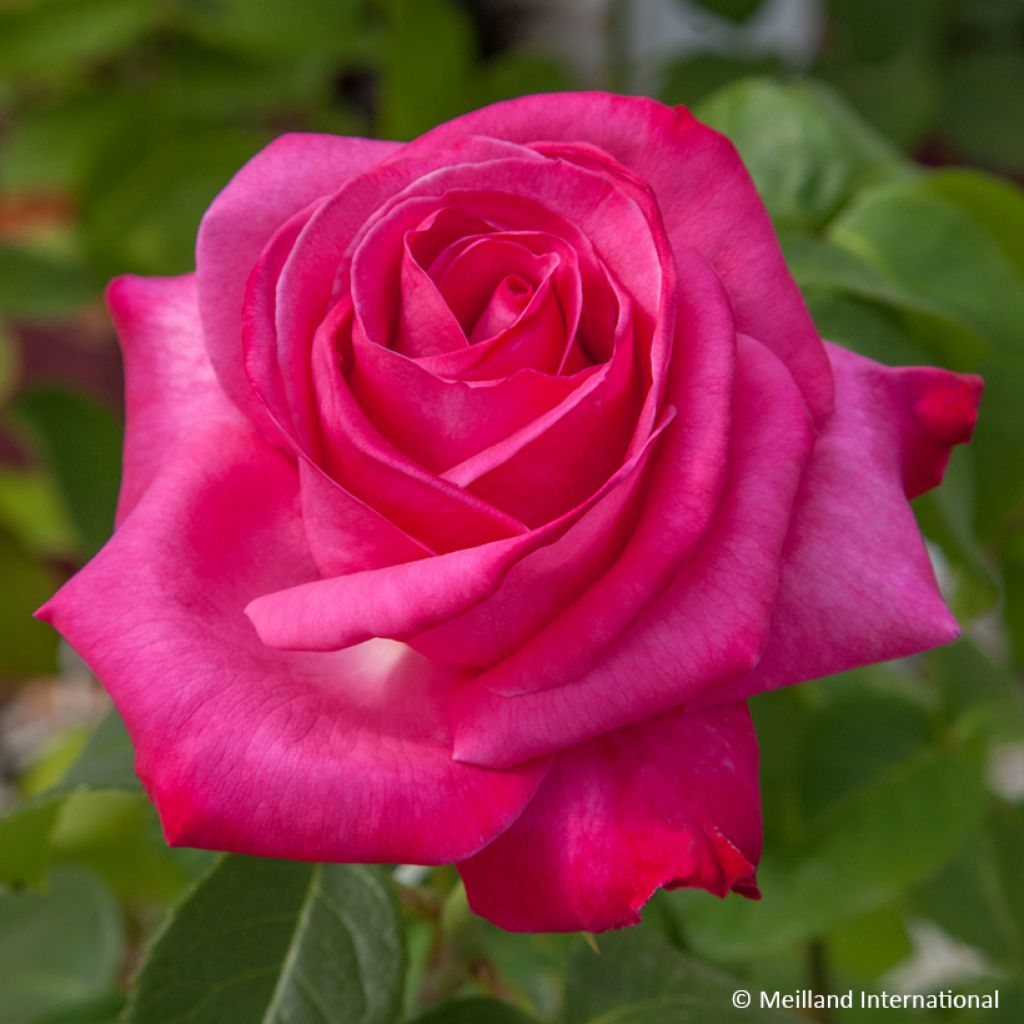

Rosa 'Meisionver' CAPRICE DE MEILLAND® - Rosier Caprice de Meilland, Rosier Best Friend
Rosa 'Meisionver' CAPRICE DE MEILLAND® - Rosier Caprice de Meilland, Rosier Best Friend
Rosa 'Meisionver' CAPRICE DE MEILLAND®
Rosier Caprice de Meilland, Rosier Best Friend
Special offer!
Receive a €20 voucher for any order over €90 (excluding delivery costs, credit notes, and plastic-free options)!
1- Add your favorite plants to your cart.
2- Once you have reached €90, confirm your order (you can even choose the delivery date!).
3- As soon as your order is shipped, you will receive an email containing your voucher code, valid for 3 months (90 days).
Your voucher is unique and can only be used once, for any order with a minimum value of €20, excluding delivery costs.
Can be combined with other current offers, non-divisible and non-refundable.
Home or relay delivery (depending on size and destination)
Schedule delivery date,
and select date in basket
This plant carries a 24 months recovery warranty
More information
We guarantee the quality of our plants for a full growing cycle, and will replace at our expense any plant that fails to recover under normal climatic and planting conditions.

Does this plant fit my garden?
Set up your Plantfit profile →
Description
The Caprice de Meilland® ‘Meisionver’ Rose, which combines elegance, brilliance and abundance, is a diva in the garden and a star as cut flowers. Its large, highly fragrant, turbinate roses display an intense and luminous pink, a strong and dynamic colour that stands out in the garden. They bloom successively from spring until the first frosts on foliage that remains impeccable. With a balanced and vigorous habit, the bush will make a striking impact in a flowerbed or even in a large pot on the patio.
The Caprice de Meilland® ‘Meisionver’ Rose is a creation by the Meilland house introduced on the market in 1997, sometimes sold under the name Best Friend Rose. This variety has been widely awarded for its exceptional fragrance, notably winning the Fragrance Prize at the International New Roses Competition in Bagatelle, Paris, in 1997. It belongs to the horticultural group of large-flowered bush roses also known as hybrid teas, renowned for their large, single flowers borne on long stems and for their upright habit.
The Caprice de Meilland® rose has a well-balanced, bushy habit, reaching a height of 80 cm to 1.10 m and a spread of 50 cm within a few years. Its turbinate flowers of approximately 12 cm in diameter and formed of 35 petals showcase an intense Bengal pink hue - a bright and vivid shade of pink often associated with a lively tone slightly leaning towards fuchsia red. Its name comes from the Bengali region in Asia where this colour is traditionally used in textiles. The powerful fragrance of these roses combines hints of May rose and passion fruit. The dense, medium-green, semi-matt foliage offers excellent disease resistance. Flowering extends from May-June until October-November, ceasing with the frosts or during summer droughts. The thorny stems bear compound leaves with ovate, dentate, medium green leaflets. The foliage is deciduous, falling in autumn and regrowing the following spring.
Since its introduction in 1997, the Caprice de Meilland® rose bush has won over rose enthusiasts with its beauty and exquisite fragrance. Perhaps its name references the unpredictable emotions and desires of love, much like a fleeting passion or changing affection. In any case, it perfectly describes this extremely alluring rose.
The Caprice de Meilland® Rose will unfold its charm in a garden where it takes centre stage, surrounded by plants chosen to enhance its brilliance. You can plant it in groups of 3 to 5 specimens in a large flowerbed or a small flowering hedge. Consider pairing it for example with some Tulbaghia, with their delicate umbels of mauve, pink, or white flowers. Pink or white daylilies will highlight the perfect opulence and brilliance of its flowers. Opt for the silvery foliage of some Artemisia ‘Powis Castle’ to surround your rose with a soft glow throughout the seasons. Pick its roses to create elegant, fragrant cut flower displays.
Plant habit
Flowering
Foliage
Botanical data
Rosa
'Meisionver' CAPRICE DE MEILLAND®
Rosaceae
Rosier Caprice de Meilland, Rosier Best Friend
Rosa CAPRICE DE MEILLAND
Cultivar or hybrid
Other Large-flower tea Roses
View all →Planting and care
To plant your Caprice de Meilland rose, prepare the soil by working it to a depth of 30 cm, breaking up any clumps and adding a base fertiliser such as dried blood or dehydrated horn at the bottom of the planting hole. Place your plant after removing it from its pot, covering the top of the root ball with 3 cm of soil, then backfill and water thoroughly to eliminate any air pockets. During dry weather, water regularly for a few weeks to encourage root establishment. Also consider feeding your rose with a special rose fertiliser to promote flowering. Choose a sunny spot, or partial shade in very hot regions.
Planting period
Intended location
Care
Planting & care advice
This item has not been reviewed yet - be the first to leave a review about it.
Similar products
Haven't found what you were looking for?
Hardiness is the lowest winter temperature a plant can endure without suffering serious damage or even dying. However, hardiness is affected by location (a sheltered area, such as a patio), protection (winter cover) and soil type (hardiness is improved by well-drained soil).

Photo Sharing Terms & Conditions
In order to encourage gardeners to interact and share their experiences, Promesse de fleurs offers various media enabling content to be uploaded onto its Site - in particular via the ‘Photo sharing’ module.
The User agrees to refrain from:
- Posting any content that is illegal, prejudicial, insulting, racist, inciteful to hatred, revisionist, contrary to public decency, that infringes on privacy or on the privacy rights of third parties, in particular the publicity rights of persons and goods, intellectual property rights, or the right to privacy.
- Submitting content on behalf of a third party;
- Impersonate the identity of a third party and/or publish any personal information about a third party;
In general, the User undertakes to refrain from any unethical behaviour.
All Content (in particular text, comments, files, images, photos, videos, creative works, etc.), which may be subject to property or intellectual property rights, image or other private rights, shall remain the property of the User, subject to the limited rights granted by the terms of the licence granted by Promesse de fleurs as stated below. Users are at liberty to publish or not to publish such Content on the Site, notably via the ‘Photo Sharing’ facility, and accept that this Content shall be made public and freely accessible, notably on the Internet.
Users further acknowledge, undertake to have ,and guarantee that they hold all necessary rights and permissions to publish such material on the Site, in particular with regard to the legislation in force pertaining to any privacy, property, intellectual property, image, or contractual rights, or rights of any other nature. By publishing such Content on the Site, Users acknowledge accepting full liability as publishers of the Content within the meaning of the law, and grant Promesse de fleurs, free of charge, an inclusive, worldwide licence for the said Content for the entire duration of its publication, including all reproduction, representation, up/downloading, displaying, performing, transmission, and storage rights.
Users also grant permission for their name to be linked to the Content and accept that this link may not always be made available.
By engaging in posting material, Users consent to their Content becoming automatically accessible on the Internet, in particular on other sites and/or blogs and/or web pages of the Promesse de fleurs site, including in particular social pages and the Promesse de fleurs catalogue.
Users may secure the removal of entrusted content free of charge by issuing a simple request via our contact form.
The flowering period indicated on our website applies to countries and regions located in USDA zone 8 (France, the United Kingdom, Ireland, the Netherlands, etc.)
It will vary according to where you live:
- In zones 9 to 10 (Italy, Spain, Greece, etc.), flowering will occur about 2 to 4 weeks earlier.
- In zones 6 to 7 (Germany, Poland, Slovenia, and lower mountainous regions), flowering will be delayed by 2 to 3 weeks.
- In zone 5 (Central Europe, Scandinavia), blooming will be delayed by 3 to 5 weeks.
In temperate climates, pruning of spring-flowering shrubs (forsythia, spireas, etc.) should be done just after flowering.
Pruning of summer-flowering shrubs (Indian Lilac, Perovskia, etc.) can be done in winter or spring.
In cold regions as well as with frost-sensitive plants, avoid pruning too early when severe frosts may still occur.
The planting period indicated on our website applies to countries and regions located in USDA zone 8 (France, United Kingdom, Ireland, Netherlands).
It will vary according to where you live:
- In Mediterranean zones (Marseille, Madrid, Milan, etc.), autumn and winter are the best planting periods.
- In continental zones (Strasbourg, Munich, Vienna, etc.), delay planting by 2 to 3 weeks in spring and bring it forward by 2 to 4 weeks in autumn.
- In mountainous regions (the Alps, Pyrenees, Carpathians, etc.), it is best to plant in late spring (May-June) or late summer (August-September).
The harvesting period indicated on our website applies to countries and regions in USDA zone 8 (France, England, Ireland, the Netherlands).
In colder areas (Scandinavia, Poland, Austria...) fruit and vegetable harvests are likely to be delayed by 3-4 weeks.
In warmer areas (Italy, Spain, Greece, etc.), harvesting will probably take place earlier, depending on weather conditions.
The sowing periods indicated on our website apply to countries and regions within USDA Zone 8 (France, UK, Ireland, Netherlands).
In colder areas (Scandinavia, Poland, Austria...), delay any outdoor sowing by 3-4 weeks, or sow under glass.
In warmer climes (Italy, Spain, Greece, etc.), bring outdoor sowing forward by a few weeks.






























